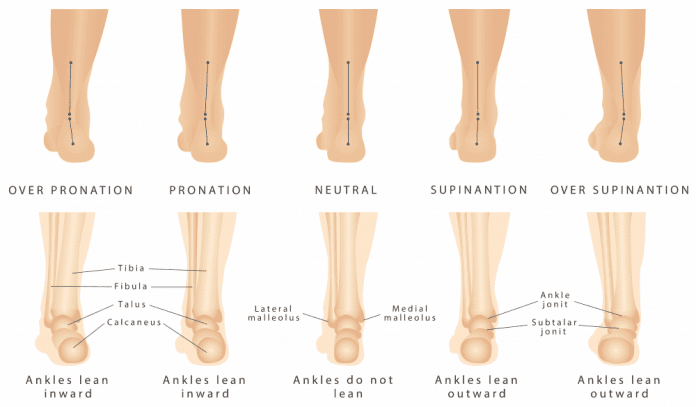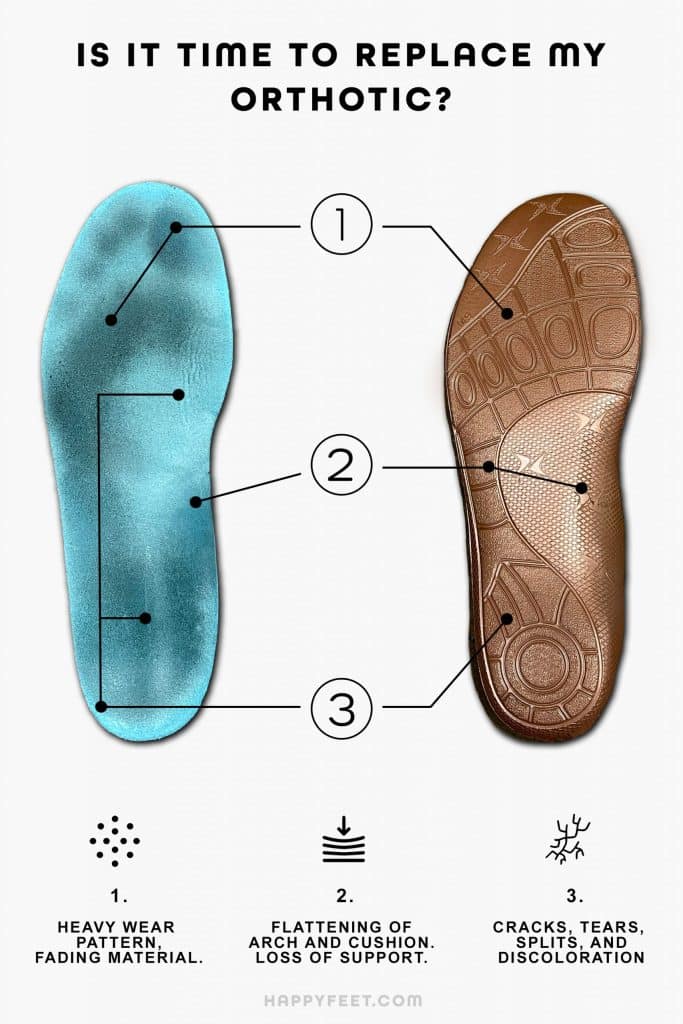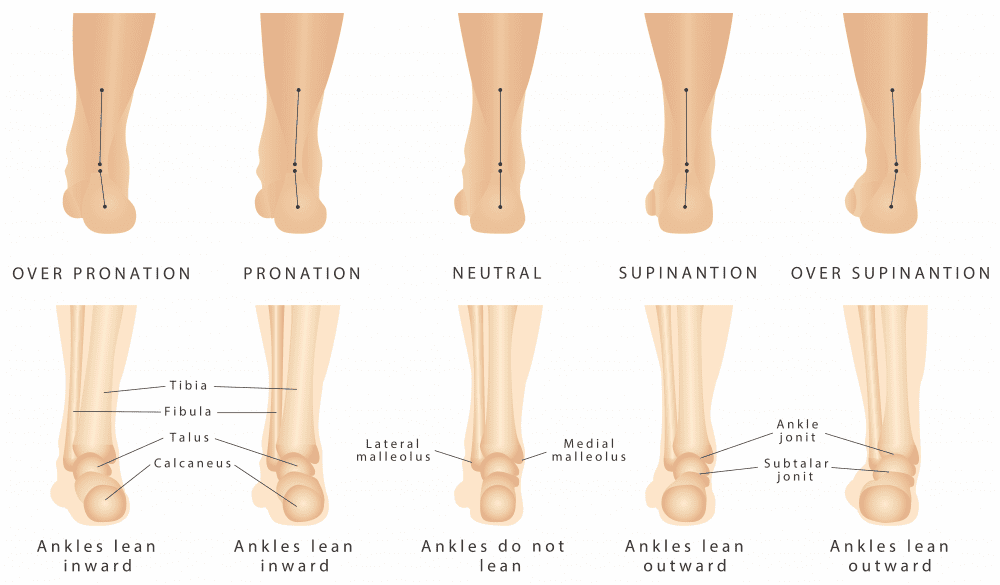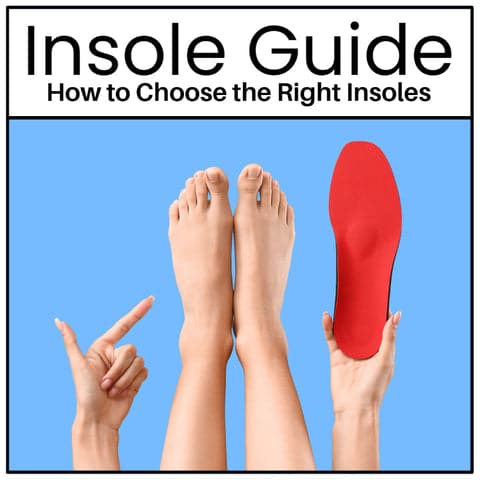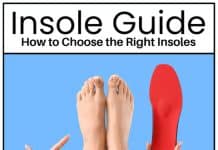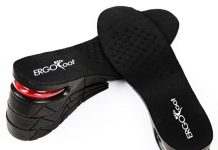If you’ve ever experienced foot pain or discomfort, you may have wondered whether insoles could solve your woes.
The answer, my friend, lies in recognizing the signs that your feet are desperately calling out for some extra support.
From arch and heel pain to foot fatigue, this article will guide you in identifying the telltale indicators that scream, “It’s time for insoles!” So, lace up your shoes, and let’s embark on a journey to discover whether you ely need insoles to walk this wocomfortably and easilyease.
What are insoles?
Insoles, or shoe inserts or footbeds, are supportive devices placed inside shoes to provide additional comfort, support, and alignment for the feet. They are designed to improve the shoe’s overall fit and address specific foot conditions or biomechanical issues. Insoles are available in various materials and designs to cater to different needs and preferences.
Different types of insoles
Several different types of insoles are available on the market, each designed to target specific foot conditions or provide certain benefits. Some common types of insoles include:
- Arch support insoles: These insoles are designed to provide additional support and stability to the foot’s arch. They can help alleviate pain and discomfort associated with flat feet or high arches.
- Cushioning insoles: These insoles are made from gel or foam and designed to provide extra cushioning and shock absorption. They can be particularly beneficial for individuals who spend long hours on their feet or engage in high-impact activities.
- Orthotic insoles: Orthotic insoles are specifically designed to address biomechanical issues and correct foot misalignments. They are often recommended for conditions like overpronation or supination.
- Sports-specific insoles: These insoles are designed to provide targeted support and cushioning for specific sporting activities. They are engineered to enhance performance, reduce the risk of injury, and improve overall comfort during athletic pursuits.
Benefits of using insoles
Insoles can offer a wide range of benefits for your feet and overall comfort. Some of the main advantages include:
- Improved foot alignment: Insoles can help correct misalignments and improve overall foot posture. Providing support to the arch and evenly distributing pressure can help alleviate pain and discomfort associated with poor foot mechanics.
- Enhanced comfort and cushioning: Insoles add an extra layer of cushioning and support inside the shoe, making walking or standing for long periods more comfortable. They can help reduce fatigue and pressure on specific areas of the foot.
- Reduced risk of foot and lower limb injuries: Insoles can help absorb shock and distribute forces more evenly when walking or participating in physical activities. This can help reduce the risk of joint injuries such as plantar fasciitis, Achilles tendonitis, or stress fractures.
- Better support for specific foot conditions: Insoles can provide targeted support and relief for specific foot conditions such as flat feet, high arches, bunions, metatarsalgia, or Morton’s neuroma. They can help alleviate pain and discomfort associated with these conditions and improve overall foot function.
Signs that you may need insoles
While insoles can be beneficial for many individuals, sure signs and symptoms indicate a possible need for additional support or cushioning. If you experience any of the following, it may be time to consider using insoles:
Foot pain or discomfort
If you frequently experience foot pain, discomfort, or fatigue, it could be a sign that your feet are not receiving adequate support or cushioning. Pain may be localized in specific areas, such as the arch, heel, or foot ball.
Uneven shoe wear
If you notice that the soles of your shoes wear down unevenly, it could indicate poor foot alignment or uneven weight distribution. Insoles can help balance pressure and prevent excessive wear on specific shoe areas.
Flat feet or high arches
If you have flat feet (low arches) or high arches, you may be more prone to foot problems or biomechanical issues. Insoles with arch support can help provide stability and relieve strain on the arch, promoting better foot alignment.
Overpronation or supination
Overpronation and supination refer to excessive inward or outward rolling of the foot during walking or running. These biomechanical issues can lead to various foot problems and uneven pressure distribution. Insoles can help correct these issues and promote proper foot mechanics.
Injury or foot condition
If you have suffered from a foot injury or have a known foot condition such as plantar fasciitis, Achilles tendonitis, bunions, metatarsalgia, or Morton’s neuroma, using insoles can provide additional support and comfort during the healing process.
Standing or walking for extended periods
If your job or lifestyle requires you to stand or walk for extended periods, insoles can help reduce fatigue, provide cushioning, and improve comfort. They can help absorb shock and reduce the strain on your feet and lower limbs.
Common foot problems that may require insoles
Insoles can be particularly beneficial for individuals dealing with specific foot problems. Here are some common foot conditions that may require the use of insoles:
Plantar fasciitis
Plantar fasciitis is characterized by inflammation and pain in the plantar fascia, a thick band of tissue that runs along the bottom of the foot. Insoles with arch support and cushioning can help alleviate pain and provide relief for individuals suffering from this condition.
Achilles tendonitis
Achilles tendonitis is the inflammation of the Achilles tendon, which connects the calf muscles to the heel bone. Insoles with cushioning and shock-absorbing properties can help reduce strain on the tendon and provide support during the healing process.
Bunions
Bunions are bony bumps at the base of the big toe, causing pain and discomfort. Insoles with a wide toe box and cushioning can help reduce pressure on the affected area and alleviate pain associated with bunions.
Metatarsalgia
Metatarsalgia refers to pain and inflammation in the ball of the foot. Insoles with extra padding or metatarsal pads can help redistribute pressure and relieve pain in this area.
Morton’s neuroma
Morton’s neuroma is a condition that affects the nerves between the toes, causing pain, tingling, or numbness. Insoles with metatarsal support and cushioning can help alleviate symptoms and provide relief.
How do you assess your need for insoles?
Several assessment methods can be employed to determine whether you could benefit from using insoles. These include:
Consultation with a healthcare professional
If you are experiencing persistent foot pain or have a known foot condition, it is advisable to consult with a healthcare professional, such as a podiatrist or orthopedic specialist. They can assess your foot mechanics, evaluate your symptoms, and recommend suitable insoles.
Self-assessment of symptoms
You can also perform a self-assessment by evaluating your symptoms and their impact on your daily activities. Take note of any pain, discomfort, or instability you experience while walking, running, or standing for long periods.
Observation of foot mechanics
Observe your foot mechanics while walking or running. Look for signs of overpronation (excessive inward rolling of the foot) or supination (excessive outward rolling). These biomechanical issues can indicate a need for insoles to correct foot alignment.
Review of medical history
Consider your medical history and any previous foot injuries or conditions that you have experienced. If you have a history of foot problems, using insoles as a preventive measure can help reduce the risk of re-injury or developing new issues.
Benefits of using insoles
Insoles can provide numerous benefits for your overall foot health and comfort. Some key advantages of using insoles include:
Improved foot alignment
Insoles can help correct foot misalignments and improve overall foot posture by providing additional support and stability. This can help alleviate pain, reduce strain on specific areas of the foot, and promote better overall foot function.
Enhanced comfort and cushioning
Insoles add a layer of cushioning and shock absorption to your shoes, enhancing overall comfort. They can help reduce fatigue and pressure on specific foot areas, making walking or standing for extended periods more comfortable.
Reduced risk of foot and lower limb injuries
Insoles can help absorb shock and distribute forces more evenly during walking or physical activities. This can help reduce the risk of joint injuries such as plantar fasciitis, Achilles tendonitis, stress fractures, or shin splints.
Better support for specific foot conditions
Insoles can provide targeted support and relief for specific foot conditions such as flat feet, high arches, bunions, metatarsalgia, or Morton’s neuroma. They can help alleviate pain and discomfort associated with these conditions and promote better foot function.
Different types of insoles
Various insoles are available, each designed to address different foot conditions or provide specific benefits. Some common types of insoles include:
Arch support insoles
These insoles are designed to provide additional support and stability to the foot’s arch. They can help alleviate pain and discomfort associated with flat feet or high arches by promoting better foot alignment.
Cushioning insoles
These insoles are made from gel or foam and are specifically designed to provide extra cushioning and shock absorption. They can be particularly beneficial for individuals who spend long hours on their feet or engage in high-impact activities.
Orthotic insoles
Orthotic insoles are customized to address specific foot conditions or biomechanical issues. They are often recommended for conditions like overpronation or supination and can help correct foot misalignments.
Sports-specific insoles
These insoles are designed for athletes or individuals engaging in specific sporting activities. They provide targeted support and cushioning for areas that may be subjected to increased stress and can help enhance performance and reduce the risk of sports-related injuries.
How do you choose the right insoles?
Choosing the right insoles is essential to ensure you receive the appropriate support and comfort for your feet. Here are some factors to consider when selecting insoles:
Consider foot type and arch height
Take into account your foot type and arch height when choosing insoles. Different insoles are designed to cater to different foot shapes and arch heights. For example, individuals with flat feet may require insoles with higher arch support.
Evaluate the level of support and cushioning.
Consider the level of support and cushioning required for your specific needs. If you engage in high-impact activities or spend long hours on your feet, you may need insoles with enhanced shock absorption and cushioning properties.
Determine specific needs or foot conditions.
Assess any specific foot conditions or issues that you are dealing with. Depending on your needs, you may require insoles that provide targeted support or pressure relief in certain areas.
Ensure proper fit in footwear.
Make sure that the insoles fit correctly inside your footwear. They should not be too loose or too tight, as this can affect their effectiveness and comfort. Always try the insoles with the shoes you intend to wear to ensure a proper fit.
Getting custom-made insoles
Custom-made insoles can provide optimal fit and support for individuals with unique foot conditions or specific requirements. Here are some benefits and considerations when considering custom-made insoles:
The benefit of personalized fit
Custom-made insoles are designed based on a thorough assessment of your feet and specific needs. They provide a personalized fit that caters to your foot structure, ensuring maximum comfort and support.
When to consider custom insoles
Consider custom-made insoles if you have complex foot conditions, significantly uneven foot mechanics, or have not found relief from over-the-counter insoles. Custom insoles can address your unique needs and provide more targeted support.
Process of getting custom insoles
Obtaining custom-made insoles usually involves a consultation with a healthcare professional, such as a podiatrist or orthopedic specialist.
Measurements and molds of your feet are taken, and the insoles are then created based on these specifications. Specialized laboratories typically make the custom insoles.
Using and caring for insoles
To ensure optimal performance and longevity of your insoles, properly use and care for them. Here are some tips for using and maintaining your insoles:
Proper insertion into footwear
When inserting your insoles into your shoes, ensure they are positioned correctly and securely. They should lie flat and align with the contours of the shoe. Follow any specific instructions provided by the manufacturer.
Regular cleaning and maintenance
Insoles can accumulate sweat, dirt, and odor over time. To keep them clean and hygienic, it is advisable to clean them regularly. Follow the manufacturer’s recommendations for cleaning methods and avoid submerging the insoles in water if not recommended.
Replacing insoles when needed
Insoles will wear out over time due to regular use. Pay attention to any signs of wear, such as flattened cushioning or loss of support. When insoles show signs of wear or no longer provide adequate support, it’s time to replace them with new ones.
I have frequently asked questions about insoles.
To address common queries and concerns regarding the use of insoles, here are some frequently asked questions:
Are insoles only for people with foot problems?
No, insoles are not solely for individuals with foot problems. While they can relieve those with foot conditions, insoles can also benefit individuals seeking increased comfort, better support, or improved foot alignment.
Can insoles be used with any footwear?
Insoles can generally be used with most types of footwear, including athletic shoes, casual shoes, and work boots. However, the fit of the insoles may vary depending on the shoe style and shape. Ensure the insoles fit correctly inside the footwear without causing discomfort or altering the fit.
Are over-the-counter insoles as effective as custom-made ones?
Over-the-counter insoles can be effective in providing support and comfort for many individuals. However, custom-made insoles offer the advantage of a personalized fit.
They are better suited for individuals with unique foot conditions or specific needs that mass-produced insoles cannot adequately address.
Do insoles have a specific lifespan?
The lifespan of insoles depends on various factors, including the quality of the materials used and the level of wear and tear they are subjected to.
On average, insoles may last anywhere from three months to a year. However, regularly inspect your insoles for signs of wear and replace them if they no longer provide the necessary support and comfort.

